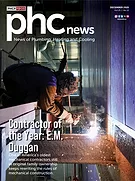What is the right number of parking spots to provide in a busy area? We have tried to properly size car parking lots for 100 years. In the past, a minimum amount of parking was required. Now, the pendulum is swinging quickly in urban areas to reduce the amount of parking spaces. Does an abundance of parking make cities better or worse for the inhabitants?
At a minimum, parking can be stressful. Arguments about parking even predate cars. In England in 1812, Rex vs. Cross determined (https://bit.ly/3tfeAv6): “Every unauthorized obstruction of a highway to the annoyance of the King’s subject is a nuisance. The King’s Highway is not to be used as a stable yard.” I have said that very thing many times as I approach a Trader Joe’s.
In 1909, William P. Eno became famous for his recommendations to adapt roadways to the booming automobile industry. Namely, he specified what to do with “dead vehicles.” His definition of a dead vehicle was an unoccupied, parked car. Car ownership exploded in the early 1900s, and parking was already hectic.
Eno predicted the invention of parking lots and the ensuing frustration of their adoption. As documented by The MIT Press Reader (https://bit.ly/48s6FtF): “Vacant lots will be leased to store waiting vehicles, and it will become profitable to construct public garages where cars can be left during the day when people are attending to their business and during the evening when they are at the theater.
“Some of these storage places will undoubtedly be in the congested parts of cities and others a little way out where people will leave their vehicles and proceed to their destination by street car, bus or taxi. This latter will be the case, I believe, in some of our congested cities such as New York, where it does not really pay to go downtown in private cars.”
Interestingly, Eno never learned to drive.
Parking and Societal Changes
New parking rules were enacted with varying degrees of success. “On April 10, 1920, the Los Angeles City Council decided that, ‘since [90] percent of those who entered the downtown area did so by streetcar, the best solution to overcrowding on the streets was to ban private automobile parking downtown.’ Almost immediately, downtown merchants were negatively affected by the ban.” The parking ban lasted 17 days, according to MIT.
Layered on top of the parking issue were bigger societal changes. Women won the right to vote and began to drive and shop on their own. Parking policy was intertwined with women’s rights and race, notes the National Building Museum (https://bit.ly/47LdC9d).
Women were initially banned from garages, namely the Automobile Club of America locations across New York. Racial segregation of parking continued for decades. “The Negro Motorist Green Book” gave guidance for navigating the dangerous world of parking while black in the 1930s.
Today, some societal pressures have eased. However, journalist Henry Grabar anecdotally describes the high stakes of parking in a Bloomberg article (https://bloom.bg/3NiDuAW): “You’re more likely to be killed over a parking space than you are to be killed by a shark.”
The interview continues to describe the history of public parking. Many cities had their own tax-funded parking areas. Local governments paid a lot to construct and maintain parking. They also paved over the land that could be profitable tax income if it were zoned for taxable buildings instead. This essentially gave rise to parking minimums. The building owner should also provide a parking lot and pay the city for that land.
Big City Parking
However, privatized parking has its own issues. I lived in the Logan Square neighborhood of Chicago about a decade ago. When I first met my wife, Jules, she lived in Lincoln Park, about four miles east of my apartment. I had a car that I drove to work, but if I tried to drive to her apartment, I would spend more time trying to find a parking spot than it would take to get to her building. I would circle around, wasting time and gas while adding to the traffic congestion in the area.
Eventually, I started riding my bike. I could go door to door and lock up my bike right outside her building. Depending on traffic, it often took less time than driving. Even in the winter, it worked well. I would warm up about a half mile in, which was similar to the car. I’m not sure if I liked biking in the Chicago cold or if I enjoyed avoiding the inconvenience of trying to park.
Why is parking so hard in Chicago? For starters, the extended Chicago metro sprawl contains about 10 million people. One major issue was the privatization of city parking meters in 2008 to offload the city’s high maintenance costs and proposed tax hikes. Chicago Parking Meters LLC purchased 36,000 meters from the city and signed a 75-year lease, reports Reuters (https://reut.rs/46RsJfK).
It immediately increased rates, which were no longer under the city’s control. The city had regrets and fought the contract all the way to the Supreme Court, which declined the case in October. Chicago Parking Meters LLC has already recovered about 1.5 times its initial investment of a billion dollars. There are 61 years to go on that contract.
“On average, in U.S. cities with [more than] 1 million people, 22 percent of land in the city center is used for parking,” notes an article in The Hill (https://bit.ly/3TjNwpc). New York City is on one side of the spectrum at 1 percent surface parking. What about the big cities in the western United States? There is a lot more space out west; did that fix everything? The Hill article reports that San Bernardino, Calif., is 49 percent parking.
The allure of parking space for everyone in the San Bernardino and Los Angeles area could make for easier door-to-door driving than in New York City. However, you guessed it, the traffic in the LA area is bad. In a WalletHub study investigating the best and worst U.S. cities to drive in (https://bit.ly/3Tjs8Ra), five cities in the bottom 10 are in California.
Despite almost half the city being a parking lot, San Bernardino was considered one of the worst cities to drive in. (This ranking methodology for the study included the cost of ownership and maintenance, traffic and safety.)
Is ample parking good or bad for us? If we paved Central Park in Manhattan and made it a big parking lot, would that make the city better or worse? It would be easier to find a parking spot, but would it only amp up all the other negatives of traffic and frustration? There isn’t an easy answer to be found here, but the more I think about it, the more it makes sense that the grandfather of parking lots had no interest in driving to one himself.






